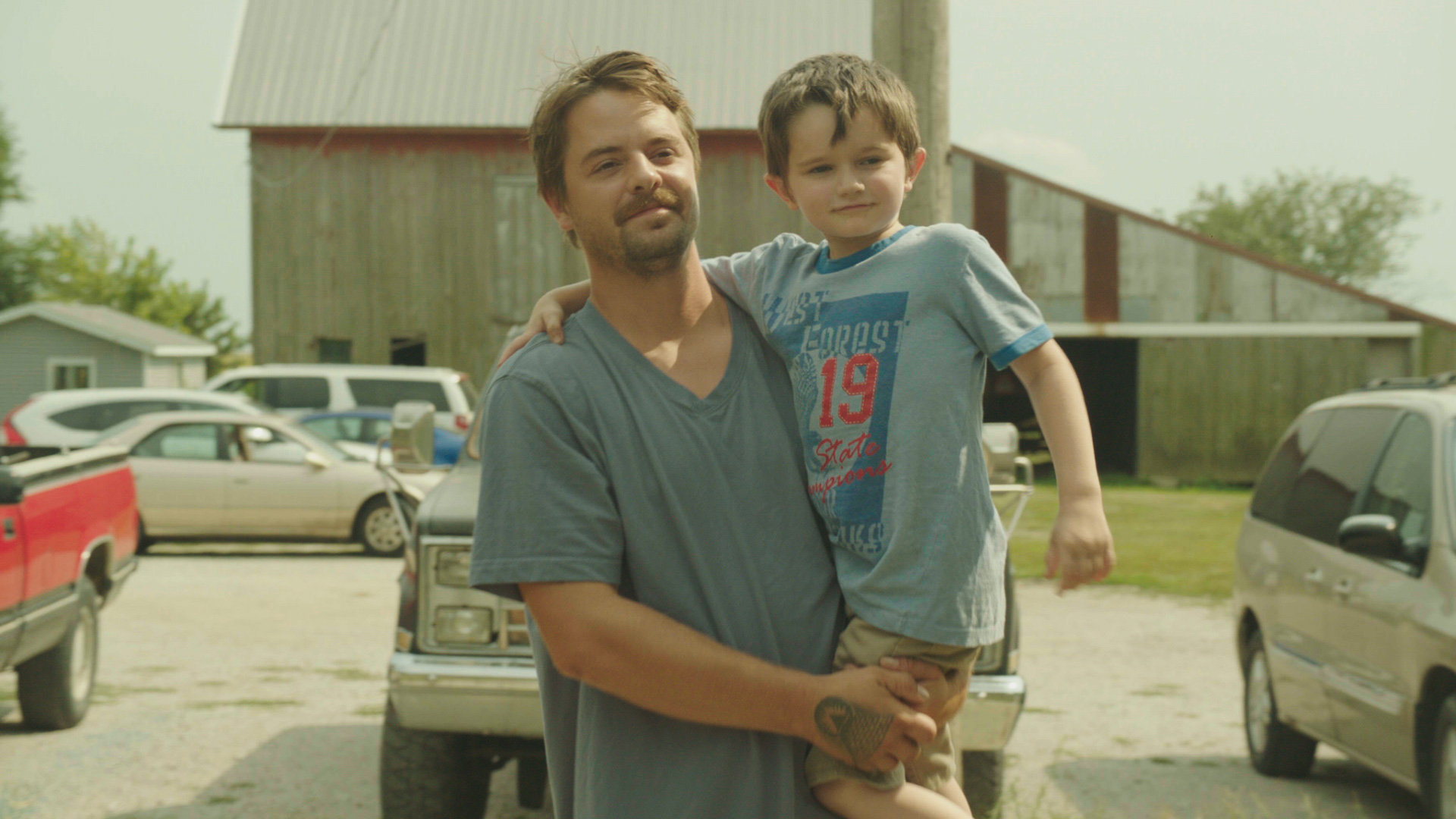There’s a question looming above the entirety of Death on the Streets, European Johan Carlsen’s film about a self-destroyed American man: Is Kurt (Zack Mulligan, one of three subjects from Bing Liu’s Minding the Gap delivering his acting debut) a failure? To anyone who sees his life with wife Sarah (Katie Folger), two young sons, and an expansive (albeit intrusive) support system, the answer is a resounding “No.” To Kurt, however, there’s zero wiggle room for believing the opposite. He’s allowed that belief. He’s allowed the depression, anger, and anxiety created by unemployment as he further distances himself from the people who love him. There’s an interesting story within those emotions—especially today. Unfortunately, Carlsen and Micah Magee’s script comes up short.
Some of that truth is a product of the budget. This is a shoestring production utilizing non-actors who often arrive onscreen, hit their mark, and deliver their lines before abruptly leaving. A large portion of the runtime is also filled with scenes trying to provide a sense of place despite testing our patience with how unnecessary their content is to the story. It would be different if this was a documentary presenting a slice of Midwestern rural existence by entering the homes of different people. Stopping the narrative halfway through to follow a side character living his (admittedly captivating) life as a heavy metal hobbyist toiling on an assembly line because Kurt’s mother wants to ask if he’s heard from her son just stretches the already laborious pacing.
Most of the reason why this isn’t the story to delve into the emotional and psychological turmoil of the so-called “Forgotten Americans” is because it holds Kurt’s prideful and partially avoidable strife as heroic. Example: the scene where a rich, white Samaritan offers Kurt a fancy dinner. Would he have done so if Kurt wasn’t also white? I don’t know. Kurt is both the rare white man working the off-the-books construction job this Samaritan is bankrolling and the only one who’s homeless (an optics issue that only feeds the far right’s notion that “foreigners” are taking “their” jobs—especially since we see a number of other minorities in the homeless shelter Kurt frequents for meals). What does the Samaritan do? He gifts Kurt his Purple Heart.
If the act itself isn’t egregious, the reaction is. After refusing countless attempts by friends and family to lend Kurt money, he takes this unearned medal with an air of dignity rather than reverence. He takes it as though he’s earned it (and the praise people supply him on the street). And maybe there’s a metaphor there—that non-military Americans are sacrificing their lives too—but is Kurt’s decision to leave his family behind rather than take a “handout” (Is it a handout if from loved ones?) somehow a crucial fight for our collective freedom? No. There are so many stories about our nation’s homeless that should be told, but one about a white man too stubborn in his toxic idea of masculinity to accept help isn’t it.
All the problems on-screen here are actually a product of the so-called “self-made” and “man’s man” worker’s refusal to accept our country is suffering from a mental health crisis. The number of issues that could be solved if men going to therapy was normalized is infinite because it would stop them from constantly imploding their lives (and that of their families) due to the pent-up rage formed by repressed shame. The gendered culture these characters are so archaically ingrained in has Sarah asking her father for financial help by telling him to give Kurt the money. Not her. They need to concoct a false scenario where Kurt comes over to “fix” something and get paid instead of letting her take the cash so as not to “emasculate” him.
This type of stuff runs rampant through Death on the Streets to the point of parody. I could have accepted parody, though, because then it would have been about poking fun at this attitude and shining a light on what needs to change. By presenting it in earnest, the film actually champions that repression. It lauds Kurt’s “tough choice” to leave everything behind, embrace his inadequacies, and risk his wellbeing so as not to become that which he’s been told is unacceptable. By refusing to be a statistic, he guarantees becoming one. This is a man who needs more than a rich guy’s pat on the shoulder and warped “respect.” Kurt needs to accept that failure ultimately births change. It doesn’t just miraculous become success by sheer will.
On the positive side: Folger is effective and Mulligan shows promise, mostly over quiet moments with some rough, confusing line deliveries in-between. And Carlsen gets some things right. The melancholic reality of Kurt’s fate is powerful, but only if treated as a cautionary tale rather than a fascinating curio. (Carlsen’s press notes glorify America’s socio-economic dysfunction as being “vitally important” towards allowing men like his lead character to “go out and have his own death instead of somebody else’s life.”) What could have therefore been an unmasking of the fallacious “boot-strap” myth sadly becomes yet another misguided amplification of it. I can’t willingly and blindly accept Kurt’s homelessness as a “commendable” option when that label facilitates the societal conditions that create homelessness for those devoid of choice.
Death on the Streets is playing during Part Two of the International Film Festival Rotterdam.

